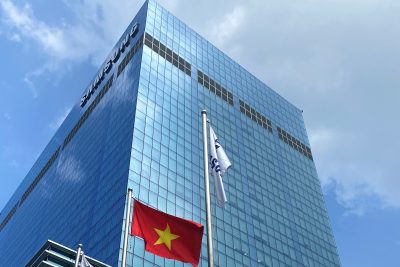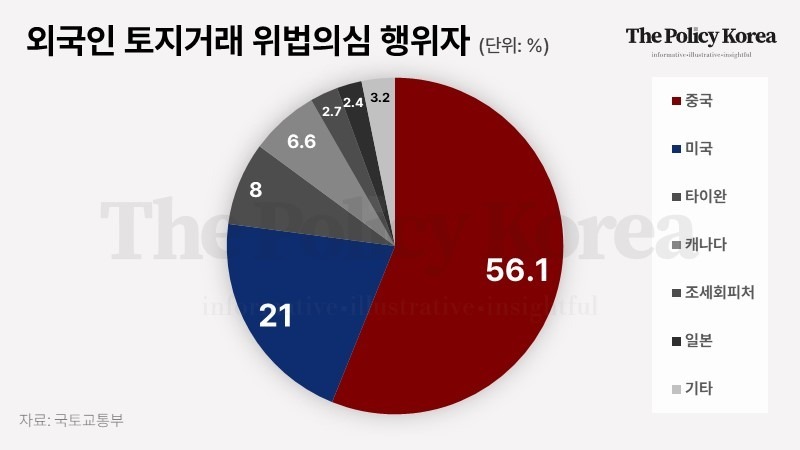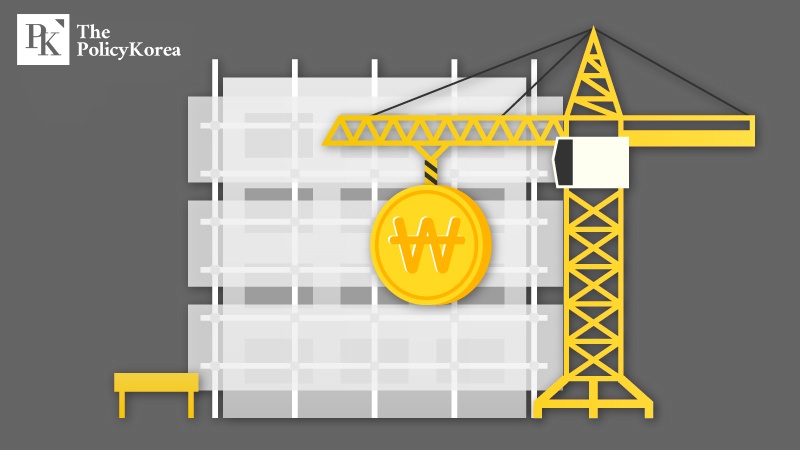[동아시아포럼] 중국의 호주 무역 제재에서 얻는 교훈
아세안과의 협력 통해 RCEP에서 경제 협력 강화해야 만연하는 자국 우선주의 속, 다자주의 통한 리스크 분산이 최우선 과제 미국 CPTPP 재참여 위해 무역체제 강화 목표 희생시켜선 안 돼
[동아시아포럼]은 EAST ASIA FORUM에서 전하는 동아시아 정책 동향을 담았습니다. EAST ASIA FORUM은 오스트레일리아 국립대학교(Australia National University)의 크로퍼드 공공정책 학교(Crawford School of Public Policy) 산하의 공공정책과 관련된 정치, 경제, 비즈니스, 법률, 안보, 국제관계 및 사회에 대한 분석 및 연구를 위한 플랫폼입니다.
저희 폴리시코리아(The Policy Korea)와 영어 원문 공개 조건으로 콘텐츠 제휴가 진행 중입니다.

시로 암스트롱은 크로포드 공공정책대학원의 경제학자이자 부교수입니다. 호주-일본 연구 센터 소장, 동아시아 포럼 편집자, 동아시아 경제 연구국 국장, 컬럼비아 경영대학원 일본 경제 및 비즈니스 센터 연구원으로 활동하고 있습니다. 일본 경제산업연구소(RIETI)의 객원 연구원이자 게이오대학교의 객원 부교수로 재직 중입니다.
2020년 5월부터 중국은 중국이 수요를 책임지던 약 12개의 호주산 제품에 대한 수입을 중단했으며, 이로 인해 연간 약 200억 호주달러(미화 134억 달러)에 달하는 수입 손실이 발생했습니다. 캔버라와 베이징 간의 정치적 관계 악화가 직접적인 원인이었지만, 중국의 미국산 농산물 및 기타 상품 수입 증가와 관련된 베이징과 워싱턴 간의 무역 협상도 영향을 미쳤습니다.
대규모 무역 중단은 많은 비용을 초래하고 경제 안보를 해칠 수 있습니다. 하지만 개방된 무역과 협력을 피하는 것이 정답은 아닙니다. 그것은 더 가난하고 덜 안전한 세상으로 이어집니다.
코로나19로 인한 봉쇄와 경기 침체로 세계 경제가 어려움을 겪고 있음에도 불구하고 호주의 대중국 수출은 2020년에 안정적으로 유지되었으며 2021년에는 14%, 2022년에는 6%의 성장률을 기록했습니다. 중국이 다른 공급처에서 쉽게 구할 수 없는 호주의 철광석에 대한 수출이나 리튬 수출과 같은 다른 상품의 급속한 확대가 결정적이었습니다. 이 기간 동안 중국은 호주 상품 수출의 40퍼센트 이상을 차지하며 호주가 코로나19 팬데믹의 경제적 영향을 견뎌내는 데 큰 도움을 주었습니다.
호주는 종종 한 국가가 무역을 지배하는 모습을 보였습니다. 과거에는 일본, 미국, 영국이 오늘날 중국과 비슷한 위치를 차지했습니다. 특정 지역에 대한 이러한 집중은 호주의 자원을 활용하고 글로벌 기회를 포착할 수 있는 능력을 보여줍니다. 호주는 이러한 긴밀한 경제 관계를 처리하기 위한 제도와 정책을 마련하고 예기치 않은 도전에 대처해 왔습니다.
중국의 무역 제재는 호주 수출업체, 특히 와인과 랍스터 수출업체에 상당한 손실을 입혔습니다. 그러나 중국의 보리, 석탄 및 기타 원자재 수입이 꾸준히 유지되어 추가 수요가 창출됨에 따라 대부분의 수출업체는 신속하게 대체 시장을 찾았습니다. 호주의 유연한 시장도 한몫을 했지만, 회복력의 중요한 외부 원천은 거래 옵션을 계속 이용할 수 있도록 보장하는 개방적인 다자간 무역 시스템이었습니다. 경쟁 가능한 시장은 무기화된 무역의 영향을 상쇄할 수 있지만 조정과 정치적 비용은 여전히 남아 있습니다.
개방형 다자 무역 시스템 덕분에 호주 수출업체들은 다른 시장을 찾을 수 있었습니다. 수출업체나 호주 정부 모두 사건이 발생하기 전까지는 그 시장이 어디일지 미리 예측할 수 없었습니다. 무역 방향 전환은 시장에 의해 주도되었습니다. 이 시스템의 핵심에는 WTO가 있으며, 단점에도 불구하고 WTO를 중심으로 구축된 자유무역협정 네트워크를 통해 무역 시스템을 유지하고 있습니다.
중국과 호주를 포함한 24개 WTO 회원국은 다자간 임시 상소 중재 협정에 동의하여 미국이 중재 판사 임명에 거부권을 행사하여 시스템을 인질로 잡고 있는 동안에도 WTO 규칙을 집행할 수 있도록 보장하고 있습니다. 호주는 중국을 상대로 WTO에 제소해 놓은 소송이 있으며, 이 소송은 중국이 MPIA에 대한 약속을 통해 집행될 수 있습니다. 일본의 참여는 국제 경제 규칙을 주도하겠다는 의지를 보여주는 중요한 진전입니다.
세계 최대 무역국인 중국은 현재의 다자간 무역 시스템에서 막대한 이해관계를 가지고 있습니다. 중국이 미국과 유럽과 마찬가지로 다자간 무역 규칙의 정신을 준수하지 않고 시스템을 악용한다고 해서 WTO를 포기하는 것이 정당화되지는 않습니다. 중국의 경제 강압 시도는 대부분 실패했으며 중국의 행동은 경제적으로나, 정치적으로나 지속적인 역효과를 낳았습니다.
참여를 심화시키고 규칙을 강화하면 참여를 피하는 대신 무역 위험을 완화하고 분산시킬 수 있습니다. 경제적 참여는 국부와 힘을 키우며, 다자간 규칙과 결합하면 국가 정책 입안자들이 사용할 수 있는 전략적 정책 옵션을 확대합니다.
중국이 글로벌 경제와 덜 연결되면 오히려 정치적 한계가 줄어들게 되고 이는 더 큰 안보 위협이 될 수 있습니다.
러시아가 유럽에 대한 가스 공급을 전략적으로 이용하는 것은 때때로 상호의존성에 대한 반론으로 인용됩니다. 그러나 러시아는 유럽의 공급망에 통합되지 않았고 러시아에 대한 유럽의 에너지 의존도는 동아시아의 경제적 상호 의존도와는 질적으로 다릅니다. 다자주의에 기반한 상호의존은 위험을 효과적으로 분산시킵니다.
동남아시아의 10개 회원국으로 구성된 아세안보다 다자주의의 힘이 더 잘 이해되고 더 본능적으로 발휘되는 곳은 없습니다. 아세안과 협력하여 중국을 포함한 아세안 역내포괄적경제동반자협정(RCEP)에서 경제 협력을 강화함으로써 이 지역을 자유롭고 개방적으로 유지할 수 있는 기회가 있습니다.
중소규모의 국가들은 국제적 규칙과 시장의 보호를 받습니다. 개방적이고 경쟁이 가능한 시장은 기존 규칙을 회피하고 경제적 영향력을 행사하는 강대국들이 파급 효과를 고려하지 않도록 제약을 가합니다. 호주의 2020년 수출 경험에서 얻은 주요 교훈은 중국이 발사한 경제적 무기가 다자간 무역 시스템에 의해 무뎌졌다는 것입니다. 강대국이 규칙을 어기더라도 자멸의 길을 따라갈 것이 아니라 다자주의를 수호하고 확장하는 것이 여전히 전 세계의 최우선 과제입니다.
전략적 이익을 고려한다면 여전히 중국이 규칙, 규범, 시장을 따르도록 하는 것이 중요합니다. 호주와 일본은 중국의 포괄적-점진적 환태평양경제동반자협정(CPTPP) 가입 신청을 계기로 진지한 협상을 통해, 중국이 회원국이 되기 위해 필요한 중국 개혁의 이정표를 정의해야 합니다. 규칙이나 기준을 약화시키지 않고도 CPTPP 회원국을 확대할 수 있습니다.
현실은 미국이 글로벌 무역 체제의 리더십을 상실하고 자국 내 문제를 처리하면서 불확실성의 근원으로 기능하고 있다는 것입니다. 2022년 12월 철강 및 알루미늄 관세에 대한 불리한 WTO 판결을 폄하하는 캐서린 타이 미국 무역대표부 대표의 발언은 규칙에 기반한 국제 질서를 옹호하는 것을 훨씬 더 어렵게 만들고 있습니다.
하지만 전 세계는 경제 안보를 위해 규칙에 기반한 국제 질서를 필요로 합니다. 일본의 리더십은 CPTPP 타결에 결정적인 역할을 했습니다. 그 이후 세계 경제 상황이 악화되어 도전이 훨씬 더 어려워졌습니다. 호주와 일본은 미국을 아시아에 묶어두기 위해 인도 태평양 경제 체제를 적극적으로 형성하고 있으며, 이들의 목표는 다자간 무역 시스템, 특히 WTO의 유지 및 개선이라는 전반적인 목표를 해치지 않으면서 미국을 CPTPP에 다시 참여시키는 것입니다.
Learning the right lessons from Chinese sanctions on Australian imports
From May 2020 Beijing blocked the import of roughly a dozen Australian goods for which China was the major market, cutting imports worth around AU$20 billion (US$13.4 billion) annually. The deteriorating political relationship between Canberra and Beijing was the proximate cause but a trade deal between Beijing and Washington involving increased Chinese imports of US agricultural and other goods was also a factor.
Such large disruptions to trade are costly and threaten economic security. But retreat from openness and economic engagement is not the answer — that’s a pathway to a poorer and much less secure world.
Australia’s exports to China remained steady in 2020 and grew by 14 per cent in 2021 and 6 per cent in 2022, all while the global economy suffered from COVID-19 lockdowns and economic downturns. Australian exports of iron ore, which could not be readily sourced by China from elsewhere, and the rapid growth of other commodities like lithium exports, led the way. China accounted for over 40 per cent of Australian goods exports during that time and helped Australia weather the economic effects of the COVID-19 pandemic.
Australia is no stranger to having one country dominate its international trade shares. In the past Japan, the United States and the United Kingdom have accounted for around as much as China does today. This geographic specialisation is a sign of Australian success in utilising its economic endowments and taking advantage of opportunities internationally. Australia has put in place institutions and economic policy settings to manage these highly interdependent economic relationships and successfully dealt with occasional shocks in their fortunes.
Chinese trade sanctions caused Australian exporters — especially of wine and lobster — huge losses. But most exporters quickly found other markets as Chinese imports of barley, coal and other commodities did not slow and opened up other demand. Flexible markets in Australia helped but the crucial external source of resilience was an open multilateral trading system which ensures that trading options remain open. Contestable markets crowd out the effects of weaponised trade but there are adjustment and political costs.
Australian exporters found other markets mainly due to a multilateral trading system which ensures that trading options remain open. Neither exporters nor the Australian government knew exactly where those markets would be ahead of the event. The redirection of trade was led by market opportunities. At the centre of that system is the WTO, which despite its weaknesses, holds together the trading system with a patchwork of WTO-plus free trade agreements built around it.
Two dozen WTO members, including China and Australia, have signed onto the Multi-Party Interim Appeal Arbitration Arrangement so that WTO rules are enforceable even while the United States holds the system hostage with its veto of the appointment of arbitration judges. Australia has cases against China in the WTO that will be enforceable through China’s commitment to the MPIA. Japan has also joined, a major development that signals Japanese commitment to take a lead on international economic rules.
As the world’s largest trader, China has a huge stake in the existing multilateral trading system. China’s non-observance of the spirit of multilateral trade rules, like that of the United States and Europe, and its gaming of the system are not reasons to give up on the WTO. Chinese efforts at economic coercion have almost entirely failed and in every case its actions have backfired economically or politically.
It is possible to find ways to mitigate and diffuse trade risks by deepening involvement and strengthening rules, rather than by avoiding engagement. Economic engagement builds national wealth and power — and when combined with multilateral rules, broadens the range of strategic policy options available to national policymakers.
A China that is much less integrated into the global economy is one with far fewer political constraints and thus is much more of a security risk.
Russia’s strategic use of gas supplies against Europe is sometimes cited as a counterpoint to the argument for interdependence. But Russia was not integrated into European supply chains and European energy dependence on Russia is qualitatively different from economic interdependence in East Asia. Interdependence underpinned by multilateralism effectively diffuses risks.
Nowhere is the power of multilateralism understood better, and is it exercised more instinctively, than in Southeast Asia’s ten-member ASEAN grouping. There is an opportunity to keep the region free and open by working with ASEAN to build economic security through intensifying economic cooperation in RCEP, including with China.
Small and medium-sized powers are protected by international rules and markets. Open, contestable markets constrain big powers that skirt established rules and use economic leverage, without thought for ramifications. The primary lesson of Australia’s 2020 export experience was that the economic weapons China fired were blunted by the multilateral trading system. Even if big powers deviate from the rules, defending and extending the multilateral system is still the top priority for the rest of the world — not following them down that self-destructive road.
The strategic interest is still to lock China into rules, norms and markets. Australia and Japan should take China’s application to join the Comprehensive and Progressive Agreement for Trans-Pacific Partnership (CPTPP), or TPP–11, to serious negotiation and define the milestones in Chinese reform that are needed for it to attain membership. CPTPP membership can be expanded without eroding rules or standards.
The reality is that the United States has vacated leadership of the global trade regime and become a source of uncertainty as it deals with its own domestic challenges. The United States Trade Representative Katherine Tai’s comments disparaging the unfavourable WTO ruling over steel and aluminium tariffs in December 2022 makes advocacy for a rules-based international order that much harder.
But the rest of the world needs the rules-based international order for economic security. Japan’s leadership was crucial to the conclusion of CPTPP. The global economic situation has deteriorated since then, making the challenge much harder. Australia and Japan are actively shaping the Indo-Pacific Economic Framework to keep the United States locked into Asia, and the joint objective should still be to get the United States back into the CPTPP. These efforts should not come at the expense of the main goal of preserving and strengthening the multilateral trading system, especially the WTO.



























